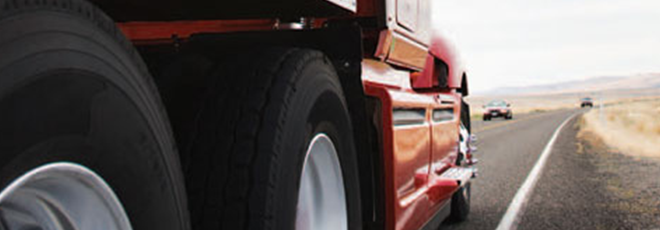It has been two centuries since U.S. President James Madison and the United States Congress declared war on Great Britain, starting what became known as the War of 1812. Enemies have become allies, foes have become trading partners and we now share the longest undefended border in the world.
But as far as we have come, those who haul freight into the U.S. continue to fight ongoing battles of their own.
There is no question that cross-border security tightened in the aftermath of the terrorist attacks of 9/11. An astounding 45 separate agencies now gather data when a truck crosses the border. The U.S. Immigration and Naturalization Service needs information on the driver, the Department of Agriculture wants details about the produce in every reefer, and even the U.S. Secret Service gathers information on selected loads.
Today’s restrictions could become even tighter in the midst of a struggling U.S. economy. Protectionist interests in the U.S. are bound to play a role in programs that affect the flow of goods back and forth across the border. Some influential American lawmakers even continue to make comments which suggest that 9/11 hijackers entered the U.S. through Canada.
As challenging as the situation is, there are still some signs of hope. Discussions about a common “perimeter security” strategy promise to tackle some of the regulatory barriers, and administrations on both sides of the border recognize the value of trade. The Government of Canada recently released two reports on the consultations around a shared vision for perimeter security. South of the 49th Parallel, U.S. President Barack Obama has also ordered a massive review of federal regulations with the goal of eliminating red tape.
In the meantime, fleets that regularly cross the border have also embraced the requirements of initiatives such as the Customs-Trade Partnership Against Terrorism (C-TPAT), and the voluntary Free and Secure Trade (FAST) cards to identify drivers, carriers and importers who have completed risk assessments.
The tools are hardly perfect. The trucking industry is obviously being asked to shoulder a disproportionate share of the regulatory burden. And fleets may not learn that a driver’s FAST card has been revoked until they try to make their next trip across the border, leading to costly delays.
But experienced fleets are also building on these initiatives with steps that can further expedite individual crossings.
Recognizing that every border point includes a different layout, and that some rules are still open to interpretations, a fleet’s driver training programs can carefully detail every step needed to process common freight, and clearly identify the physical layout of the most popular crossings. Ongoing discussions with customers, meanwhile, can help everyone to be aware of restrictions on different goods and the importance of accurate paperwork when trying to process the loads as quickly as possible.
Any work with Canada’s trucking associations plays an important role of its own. These voices of the trucking industry are actively lobbying governments on both sides of the border to help improve procedures. When armed with information about specific challenges which emerge, they can set strategies that will make a real-world difference for the industry as a whole.
Of course, cross-border fleets also need to remain aware of the ever-changing rules which govern the American roads themselves. Hours of Service regulations offer a perfect example, and even features like 11-hour driving limits are likely to come to an end in the future.
Recently introduced CSA safety ratings, meanwhile, are tracking activities on U.S. highways more closely than ever before.
As challenging as the CSA program may be, there are benefits to its enhanced safety ratings. We are already seeing drivers take a growing interest in the maintenance of equipment now that they know violations will be attached to their personal records. The new ratings have also led to valuable investments as carriers respond with a growing list of equipment ranging from electronic logbooks to Electronic On-Board Recorders, speed limiters and even tire monitors.
It’s important to remember that safe driving involves more than these technologies. Those who drive trucks equipped with tools such as Collision Warning Systems or Rollover Stability Controls can actually become complacent. But fleets which take the time to monitor the data generated by this equipment will have the chance to identify drivers who are triggering the safety systems more often than they should, and introduce the remedial training that will keep everyone safe.
Consider that to be a victory which has emerged in the midst of the ongoing border battles.



